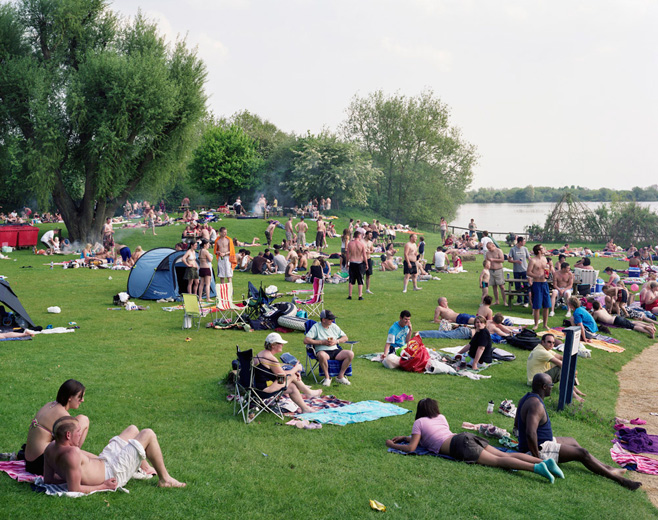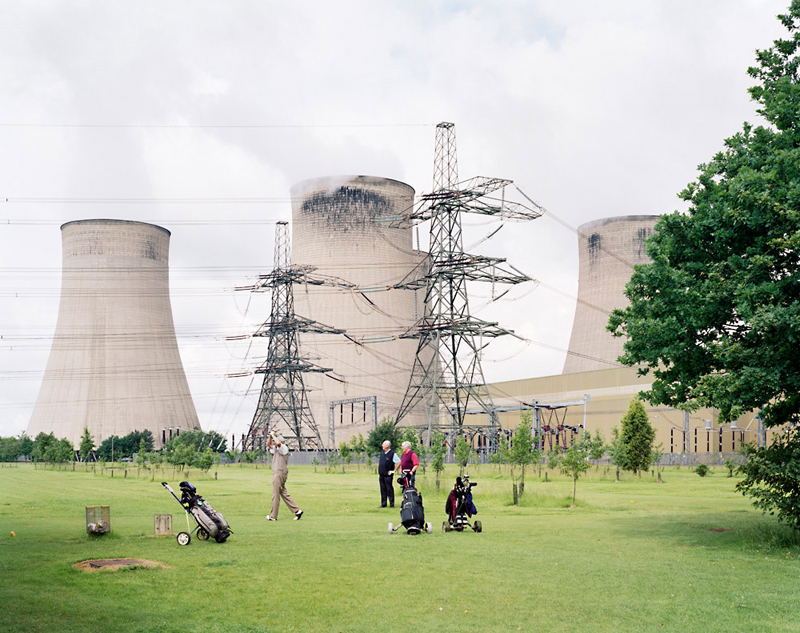'We English' describes the project of which Simon Roberts has documented much of the English heritage and lifestyle held within a large exhibition, with the focus mainly being with landscapes and their incredible visuals that they behold. He would photograph people at a distance, almost as a tip of the hat towards classical painting, but in a modern and contemporary manner. His objective almost clear way of photographing is inspirational for a documentary type landscape, and it encourages me not to worry too much about creating a photographs individualism so much, whether that is intention or not.
The image above is a classic example of such a British photograph, showing many people gathered for a fairly overcast day, a few making BBQs for food - which is all fairly British. The real image in question I choose to dissect out of its collection to show separately, as I feel its significance to my project cannot go unheard. Simon Roberts, who came and spoke at UCA last year, showed a diligence to complete his work for this project and keep the method the same running throughout, which I think is something important to remember.
I have spoken about this image before as a very influential piece for those concerned with tackling the subject of climate change in general, but it feels that there's a certain ignorance with these golfers that cannot go unnoticed. The dull, grey subject matter of the background has become like a numb pain to all those surrounding, people have become accustomed to the smoke rising from the towers commonly known as chimneys, although I feel this misrepresents their size. Visually, I feel there is a divide between the foreground and background, much like Mitch Epstein's work before - the green grass and edge of the tall tree shows nature blossoming, with a few trees in the background next to the cascading grey matter which proceeds afterwards. There are definite binary opposites at work - you could cut the image in half and wouldn't expect to see either subject matter featuring on both images.
The place of which this was taken is Ratcliffe-on-Soar, which is in Nottinghamshire. Such a place like this cannot go unnoticed, and I plan to make a trip to see the facility as soon as I possibly can, along with a few others. Once I have accumulated 3 or 4 places to see, I shall do a little tour around a few places in UK so that I may too gather my own material.


















































